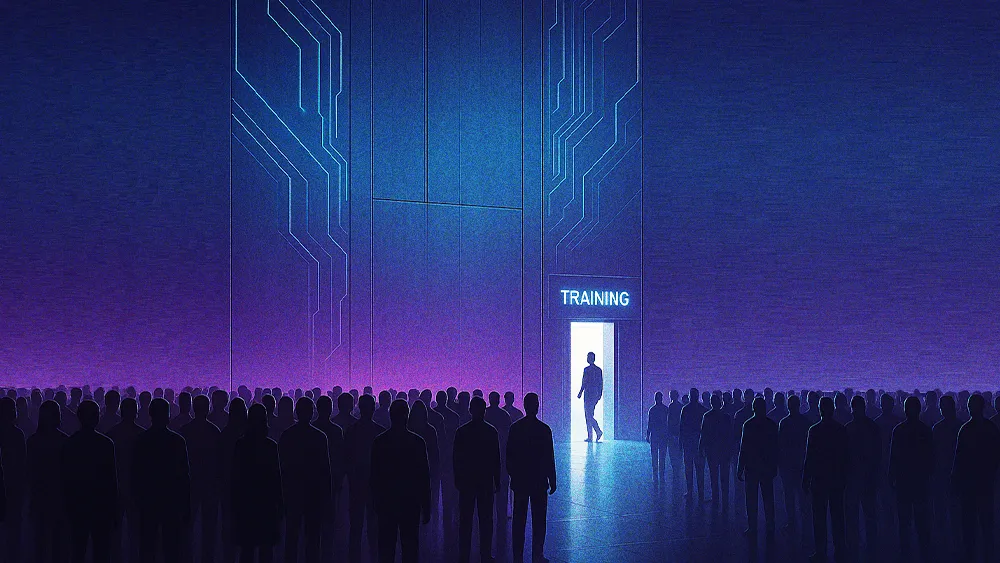
All articles
Trust in Data & AI Automation is a Competitive Advantage for Logistics Leaders Facing Global Uncertainty
Eric Johnson, Director at S&P Global and Senior Technology Editor at JOC.com, explains why AI's value in logistics is cost mitigation to offset new tariffs and fees, not transformative savings.

Key Points
Instead of generating transformative savings, AI's most significant value in logistics is cost mitigation to offset new tariffs and fees.
Eric Johnson, Director at S&P Global and Senior Technology Editor at JOC.com, explains why the biggest hurdles to widespread AI adoption are cultural resistance to ceding human control and the interconnectedness of supply chains.
Businesses can find immediate ROI by automating narrow, repetitive tasks that make AI a competitive necessity for managing new operational costs.
A single piece of trusted information, like news of political unrest, could be critical in a decision, but it has to be weighed against all the longer-term, repetitive information that the model has trained on.

The rapid pace of regulatory change is putting pressure on global businesses to rethink their entire approach to data. But in a world where legacy systems struggle to keep pace, the problem isn't theoretical. It's a present-day reality, punctuated by events like escalating tit-for-tat port fees between global powers. In response, many organizations are redesigning their workflows to generate value from AI.
For an expert's take, we spoke with Eric Johnson, Director at S&P Global and Senior Technology Editor at JOC.com. With a career spanning over two decades in senior editorial and research roles at industry cornerstones like American Shipper, Johnson's experience is uniquely grounded in global supply chains and logistics. From his perspective, the challenge for leaders centers on a core conflict: trusting the data.
"A single piece of trusted information, like news of political unrest, could be critical in a decision, but it has to be weighed against all the longer-term, repetitive information that the model has trained on," Johnson says. As executives move beyond initial experimentation, however, their focus is turning from the 'what' to the 'why.'
Now, before trusting a model's recommendation in a "multidimensional decision," leaders want a clear understanding of how that conclusion was reached. Meanwhile, the growing regulatory push for data fluidity raises the stakes for systems that can handle all types of data.
Show me the savings: The result is a notable gap between AI hype and its current application, Johnson explains. For most organizations, the most immediate ROI comes from simple cost mitigation to offset new and unplanned expenses. "I don't have people telling me AI saved them $50 million on a new supply chain. I hear about how they're using it to mitigate the increased costs they're already incurring."
But the reason for this gap isn't technology, according to Johnson. Instead, it's the deep interconnectedness of supply chains and the cultural resistance to ceding human control. "If you make a change, you're not going to gain the efficiency to make a huge monetary difference until those other partners also change at the same time."
The human element: A more realistic view of AI's long-term impact on the workforce is also needed, Johnson continues. Here, he cautions against the straightforward narrative that automation will neatly elevate all workers into strategic roles. "The biggest change that would have to happen is that companies would fundamentally have to hand all sorts of relationship-based decisions off to a system."
While the grand vision of a fully autonomous supply chain faces immense hurdles, Johnson explains, there are more immediate, high-value wins at the micro level. Instead of chasing a far-off vision, some companies are finding clear value today by focusing on narrow, repetitive processes where automation is a perfect fit. In a "narrow process," people should step back and let the system make the call, he explains. Writing a customs entry, for example, is something an AI agent can do in seconds, 24 hours a day.
Ultimately, a more pragmatic partnership between human judgment and artificial intelligence is what's needed. Otherwise, he says, the sheer scale of disruption might create complexity beyond what human teams can manage on their own. Still, Johnson made sure to establish himself as a neutral observer. "I don't think the status quo is as bad as everyone thinks, nor do I think the future is as great as everyone thinks. In general, things are more moderate."
Johnson concludes by framing the challenge as a competitive one. "If the health care costs that you provide to your employees went up by 100% overnight, you'd look for ways to mitigate that. Ignoring the new cost element of tariffs is no different, and it puts your company at an extreme disadvantage." Instead, companies should view these new, unavoidable costs the same way they would any other significant operational expense, he concludes. "If you are actively looking for software or new strategies to mitigate this ongoing cost, you're probably ahead of your peers. You can be cost-competitive if you address this appropriately. All you can do is compete better within the new rules of the game."





